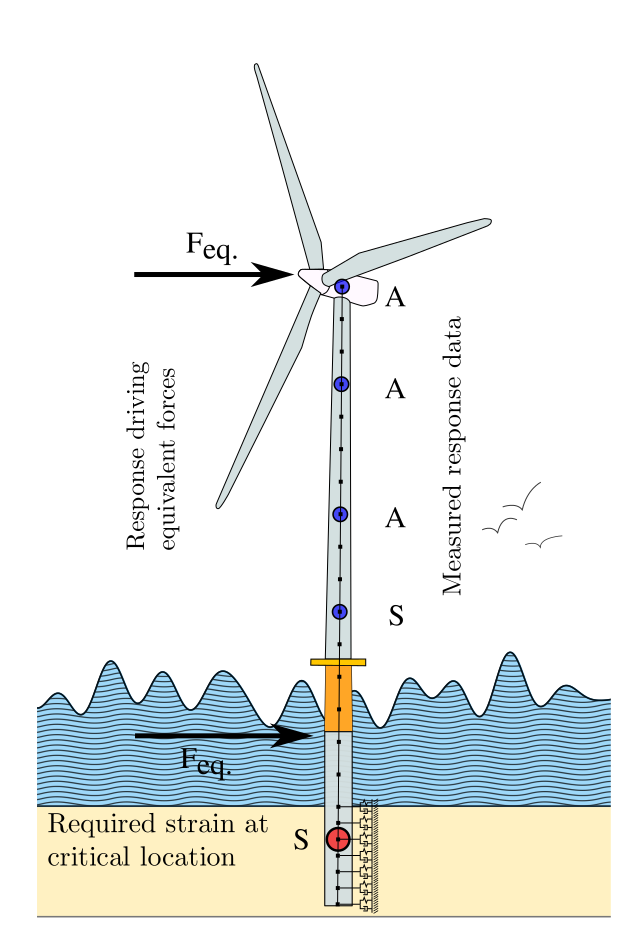The EUROS Workpackage Smart monitoring of damage development in a nutshell
Large scale use of offshore wind energy is limited by its relatively high cost. A contribution in these costs is caused by uncertainties in the fatigue lifetime prediction, leading to a potentially conservative estimate of the structural lifetime during the design stage. Extending the operational lifetime of a wind turbine beyond its predicted lifetime, by accurately monitoring the accumulated fatigue damage at critical locations, and predicting the remaining lifetime in presence of relevant uncertainties, could provide a viable option to significantly reduce the costs of energy.
The goal of this research project is to develop a robust response monitoring method using model-based extrapolation of conventional structural response measurements on the tower to a full field structural response of the entire support structure. This method could allow for monitoring the fatigue damage at desired critical locations and would circumvent the need for a costly measurement system based on localized monitoring of fatigue-critical locations which are typically located close to or below mud line. In order to ensure practical applicability as few as possible optimally placed conventional response measurements on the tower should be required, furthermore the methodology should allow for a real time application.
An important element in achieving this goal is to assure the accuracy of the physical models employed in the extrapolation techniques. Modelling uncertainties are typically site specific, time varying, can depend on the operational state, and often cannot be validated before the structure is installed. Therefore the monitoring system should be aided by a continuous model updating method that enables the translation of measurement data into an accurate description of the physical model.



